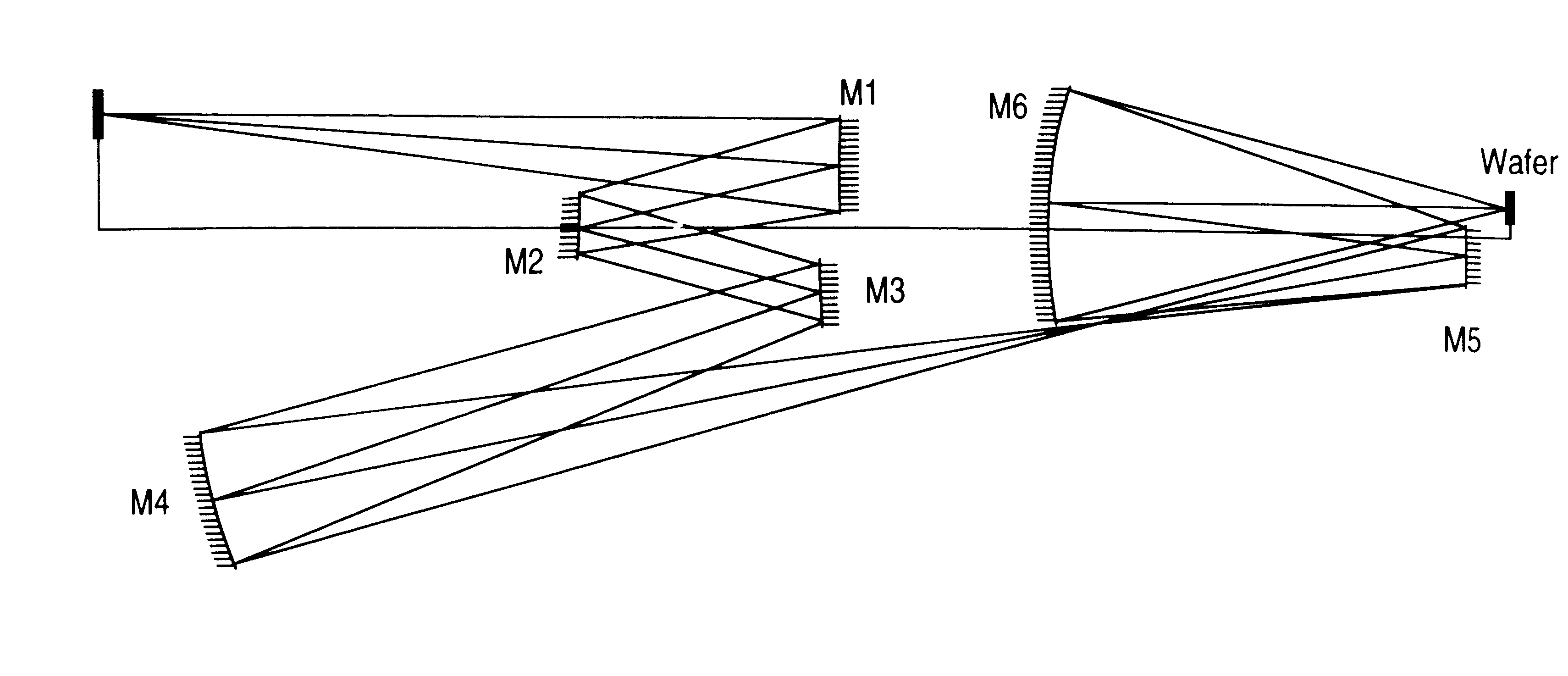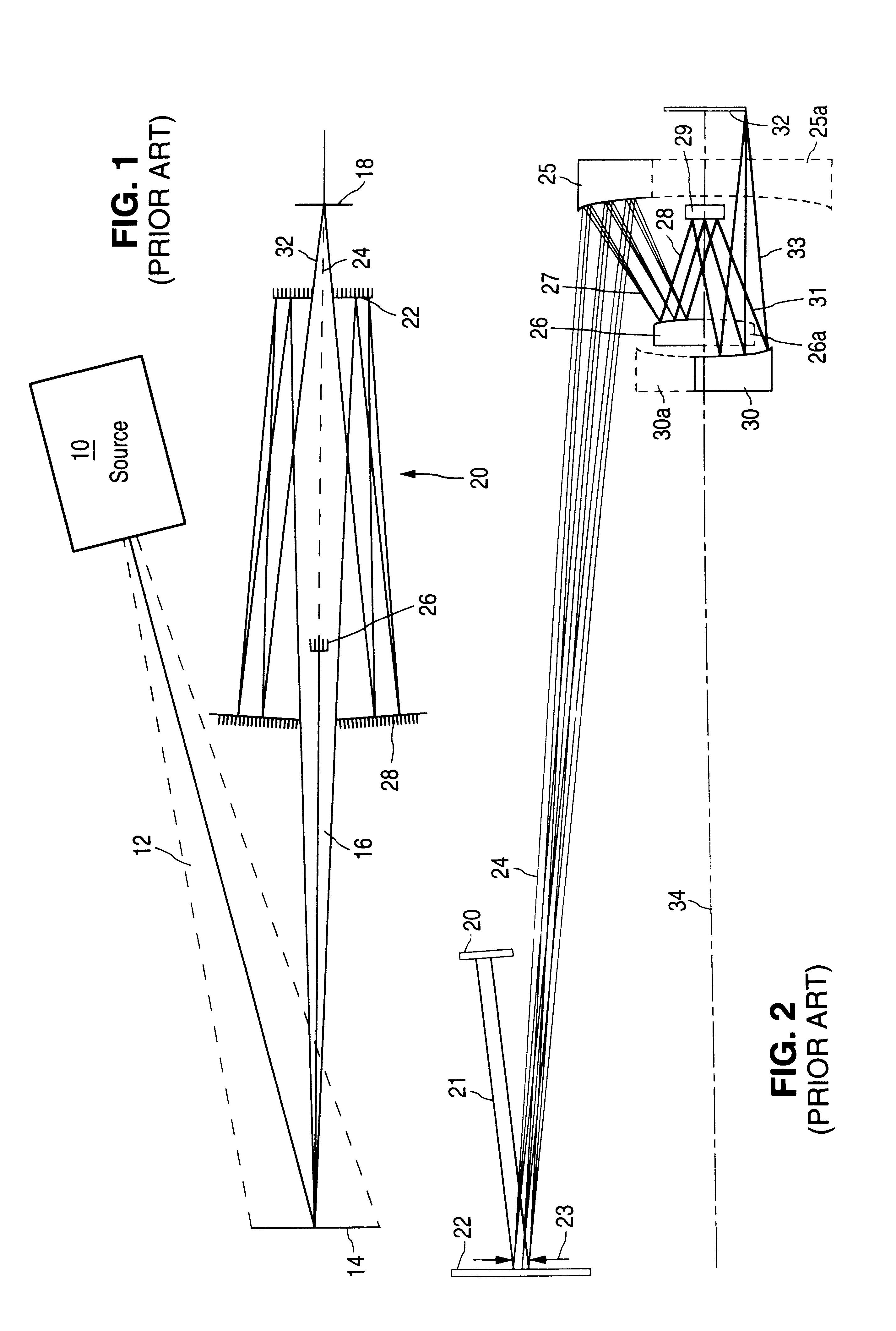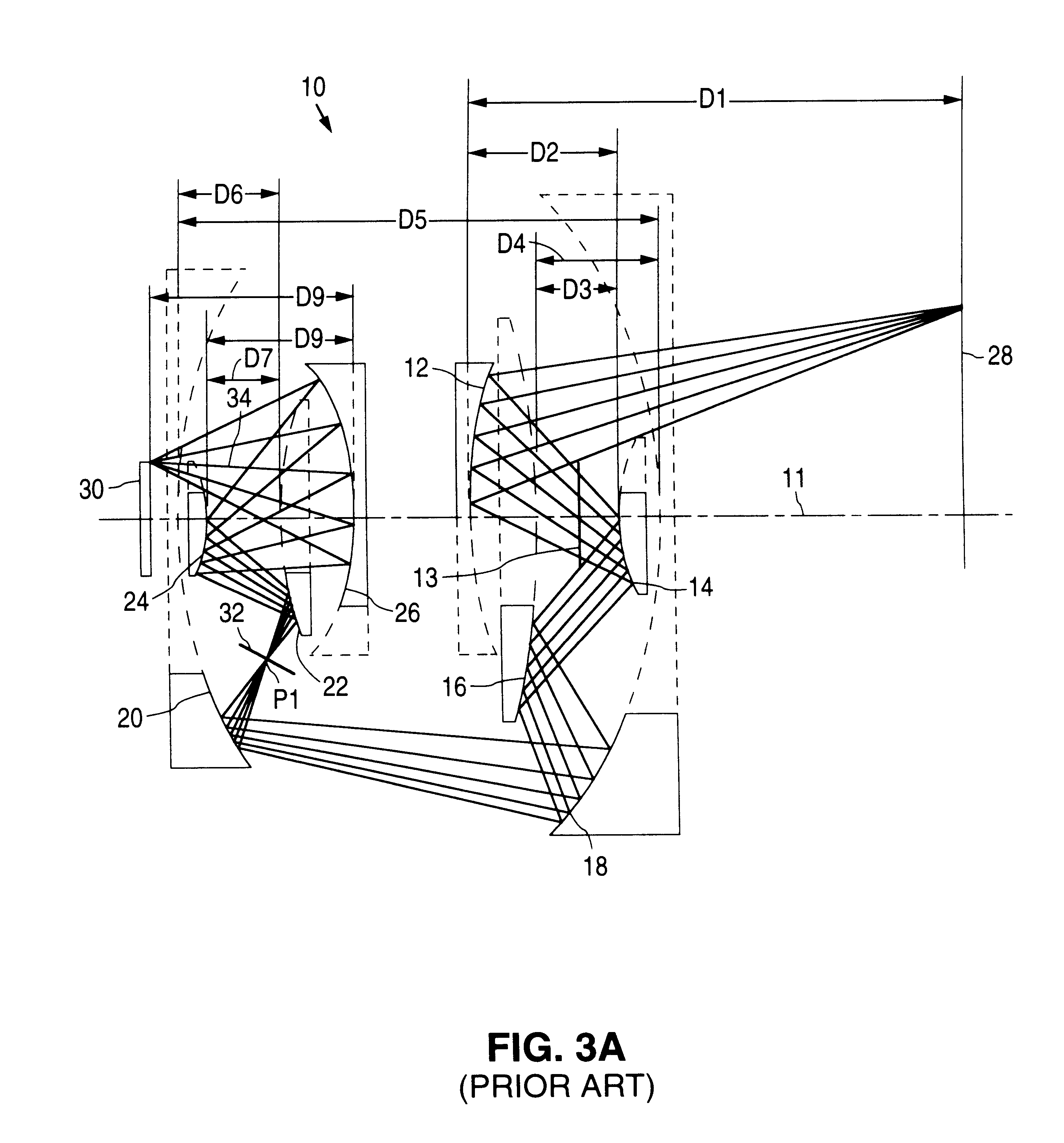High numerical aperture ring field projection system for extreme ultraviolet lithography
a projection system and numerical aperture technology, applied in the field of high numerical aperture ring field projection optical system, can solve the problems of inability to effectively reduce the freedom to control the pupil dependence of aberrations is limited, and the lithographic imaging performance is unacceptable, so as to achieve the effect of reducing the lithographic process window
- Summary
- Abstract
- Description
- Claims
- Application Information
AI Technical Summary
Problems solved by technology
Method used
Image
Examples
second embodiment
an EUV optical projection system according to the present invention is shown in FIG. 7. The radii, aspheric prescription, and the axial separation of the mirrors can be found in Table 4. Specification data as defined at the plane of the mask are also included in Table 4.
In the second embodiment of the present invention shown in FIG. 7, from long conjugate to short conjugate, the first mirror is concave, the second convex, the third convex, the fourth concave, the fifth convex, and the sixth concave. Denoting a concave mirror with a `P` (positive optical power) and a convex mirror with an `N` (negative optical power, the configuration may alternately be described as PNNPNP. The absolute values of the mirror radii are, from the object to the image as a fraction of the system focal length, 2.2401, 5.2694, 2.2435, 2.7526, 1.0804, and 1.3129 all to within around 10%. The axial separations of the mirrors, as a fraction of the system focal length, are 0.6974 (first convex to second concave...
PUM
| Property | Measurement | Unit |
|---|---|---|
| wavelengths | aaaaa | aaaaa |
| sizes | aaaaa | aaaaa |
| ringfield width | aaaaa | aaaaa |
Abstract
Description
Claims
Application Information
 Login to View More
Login to View More - R&D
- Intellectual Property
- Life Sciences
- Materials
- Tech Scout
- Unparalleled Data Quality
- Higher Quality Content
- 60% Fewer Hallucinations
Browse by: Latest US Patents, China's latest patents, Technical Efficacy Thesaurus, Application Domain, Technology Topic, Popular Technical Reports.
© 2025 PatSnap. All rights reserved.Legal|Privacy policy|Modern Slavery Act Transparency Statement|Sitemap|About US| Contact US: help@patsnap.com



